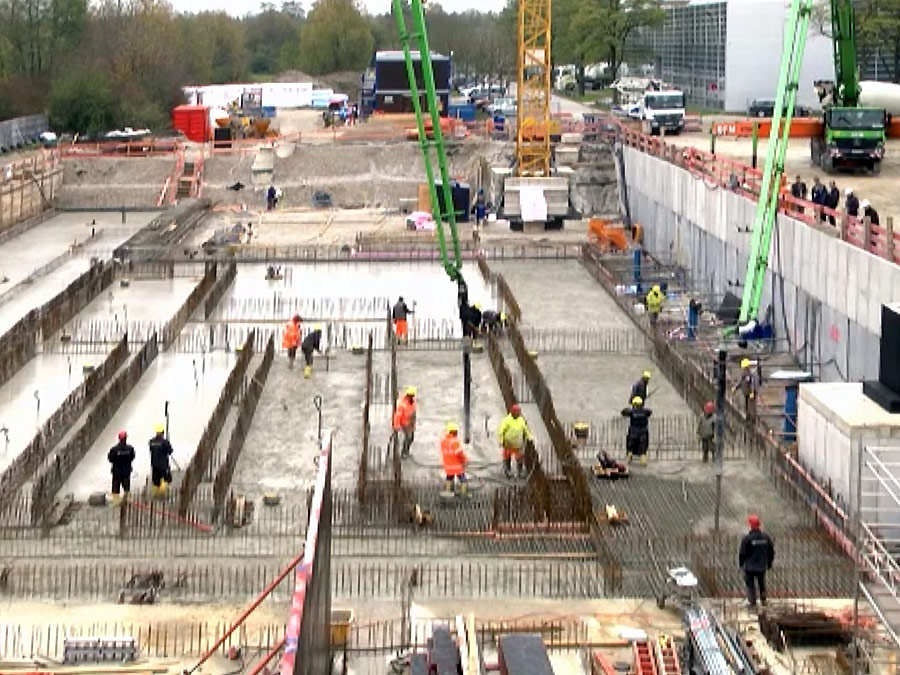A new center for Ultrashort Laser Pulses
Construction of the Center for Advanced Laser Applications has begun

Two major themes will be at the forefront of research at CALA: the development of novel biomedical imaging technologies based on high-energy X-rays, and the establishment of innovative methodologies for tumor therapy using laser-generated proton and carbon ion beams. CALA investigators also intend to explore the application of high-resolution infrared laser spectroscopy to the analysis of blood samples and/or respired air, which holds promise as a risk-free biomedical screening method.
The approaches to be employed for the generation of high-energy X-radiation and ion beams are in principle the same. In both cases, trains of extremely short, high-intensity pulses of laser light will be used to accelerate electrons, protons or ions to very high velocities.
Highly energetic electrons make it possible to produce X-radiation of unprecedented quality. This in turn is a prerequisite for enhanced imaging procedures that should enable tumors and other pathologies to be visualized at an earlier – and hence more tractable – stage than hitherto.
By using ultrashort light flashes to accelerate protons or ions, on the other hand, the researchers hope to provide the basis for cost-efficient particle-based therapies: Since protons and ionized carbon atoms are much heavier than electrons, such beams cause much greater damage when they impinge on living tissues, and can be used to kill tumors.
Thus, with the aid of laser-generated and precisely directed ion beams, targeted particle therapy could be made available to a far wider range of patients than can be treated by the current generation of particle accelerators.
In addition to medical applications, CALA will of course also focus on projects in basic research. Further studies of ultrafast processes – such as the dynamics of electrons – at atomic scales are planned. Physicists will also be exploring the interaction between light and matter using beams of a previously unattainable intensity. According to theoretical models, this capability should enable them to uncover entirely new physical phenomena.
Construction of the building itself will officially commence with the laying of the foundation stone in spring of 2015. Completion of the building which costs about 70 million euro is expected for 2017.